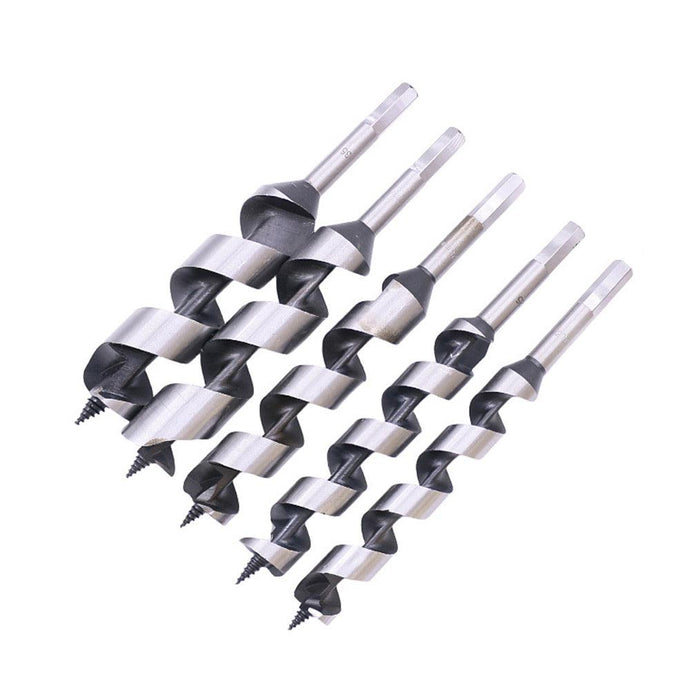|
When it comes to drilling deep, clean holes in wood, few tools compare to the effectiveness of the auger drill bit. Known for its unique design and ability to create precise holes with minimal effort, the auger bit has been a staple in woodworking and carpentry for generations. Whether you're a professional woodworker or a weekend hobbyist, understanding the strengths of an auger drill bit can transform the quality of your work, particularly when dealing with tasks that require deep holes or working with dense wood. Its combination of efficiency, precision, and ease of use make it an indispensable tool for a wide range of projects. The auger bit's most distinguishing feature is its long, spiral-shaped design. This helical structure serves multiple purposes that make it ideal for woodworking. First and foremost, the deep grooves of the spiral - often referred to as the "flutes" - allow for the efficient removal of wood chips as you drill. This is crucial when drilling deeper holes, as the accumulation of wood shavings can clog the hole and slow down the process. By continuously clearing debris, the auger bit maintains its cutting speed and prevents the drill from binding up. In contrast, other types of bits like spade or twist bits tend to struggle with debris management, especially in deeper holes. This makes the auger bit particularly useful when you need to bore long holes through beams, studs, or thick wooden planks. Another key advantage of an auger bit is its precision. At the tip of the bit is a threaded screw point that pulls the bit into the wood without requiring much downward pressure. This self-feeding feature allows for smoother and more controlled drilling, reducing the likelihood of wobbling or slipping that can result in uneven or misaligned holes. For tasks where accuracy is essential, such as creating mortises, drilling for dowels, or making holes for pegs and bolts, the auger bit offers a level of control that other bits simply can't match. Its design ensures that each hole is drilled at a consistent depth and diameter, leaving you with a professional-grade result every time. The auger bit is also renowned for its ability to handle tough, dense woods. If you're working with hardwoods like oak, maple, or walnut, a standard drill bit can struggle to penetrate the material, often burning the wood or dulling the bit. The auger bit, however, is designed to tackle these challenges head-on. Its aggressive cutting edges and powerful self-feeding screw point allow it to chew through even the hardest woods with ease. This makes it an ideal choice for projects involving structural elements like beams, posts, or furniture pieces made from heavy, durable wood. Its efficiency and toughness also reduce the wear and tear on your drill, extending the lifespan of both your tools and the bit itself. One of the most appealing aspects of using an auger drill bit in woodworking is the clean, smooth holes it produces. Unlike spade bits, which can leave rough, splintered edges, or twist bits, which may not create perfectly round holes, auger bits create clean, well-defined holes with minimal tear-out. This is especially important for projects where aesthetics matter, such as visible joinery or fine furniture work. The auger bit's cutting edges shear the wood fibers cleanly, leaving behind smooth walls that require little to no sanding. Whether you're drilling through a softwood like pine or a more challenging hardwood, the auger bit consistently delivers superior results with less effort. Auger bits are also versatile in the range of projects they can be used for. They are perfect for drilling deep holes for large wooden dowels, creating pilot holes for lag bolts, or even drilling through railroad ties and other dense materials for outdoor construction projects. In addition to traditional woodworking, auger bits are widely used in log cabin construction, where their ability to drill through thick logs is invaluable. Similarly, in post-and-beam construction, where deep and wide holes are needed for timber joinery, the auger bit shines. Its ability to drill straight, clean holes through substantial material makes it the tool of choice for these heavy-duty applications. While auger bits are incredibly efficient, they are best used with hand drills or low-speed power drills. This is because their aggressive cutting action can generate a lot of torque, especially in harder woods. Using them at high speeds can result in less control and potentially damage the bit or the material you're working on. However, when used at the correct speed, the auger bit works smoothly and powerfully, allowing you to make deep, clean cuts without excessive force. Maintenance and care for auger bits are relatively simple, but important for ensuring long-lasting performance. Because auger bits are subjected to tough conditions, it's essential to keep them sharp. A dull auger bit not only works less efficiently but can also cause your drill to overheat and reduce the quality of the holes you're drilling. Regular sharpening of the cutting edges and keeping the threaded screw point clean will ensure the bit continues to perform at its best. Additionally, after each use, cleaning the bit's flutes to remove any wood debris will prevent buildup and keep it running smoothly. In summary, the auger drill bit is a must-have tool for any woodworker or carpenter dealing with deep drilling tasks, especially when working with dense or thick materials. Its efficient design, with self-feeding capability and debris-clearing flutes, makes it an excellent choice for creating clean, precise holes with minimal effort. From structural work in construction to fine joinery in woodworking, the auger bit provides the perfect balance of power, precision, and control. Whether you're building furniture, working on home renovations, or taking on outdoor projects, the auger drill bit will help you achieve professional-quality results with ease. 
|
